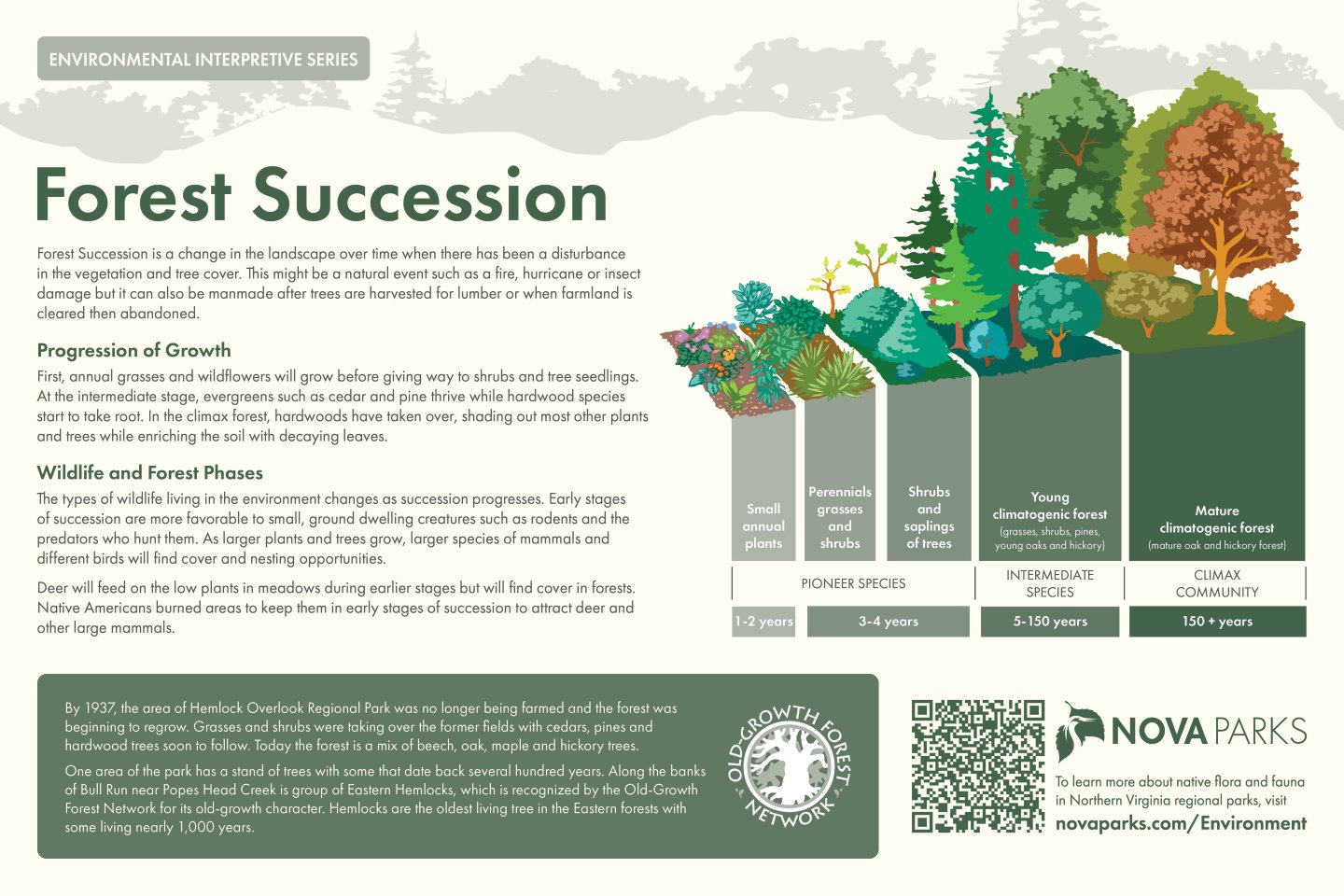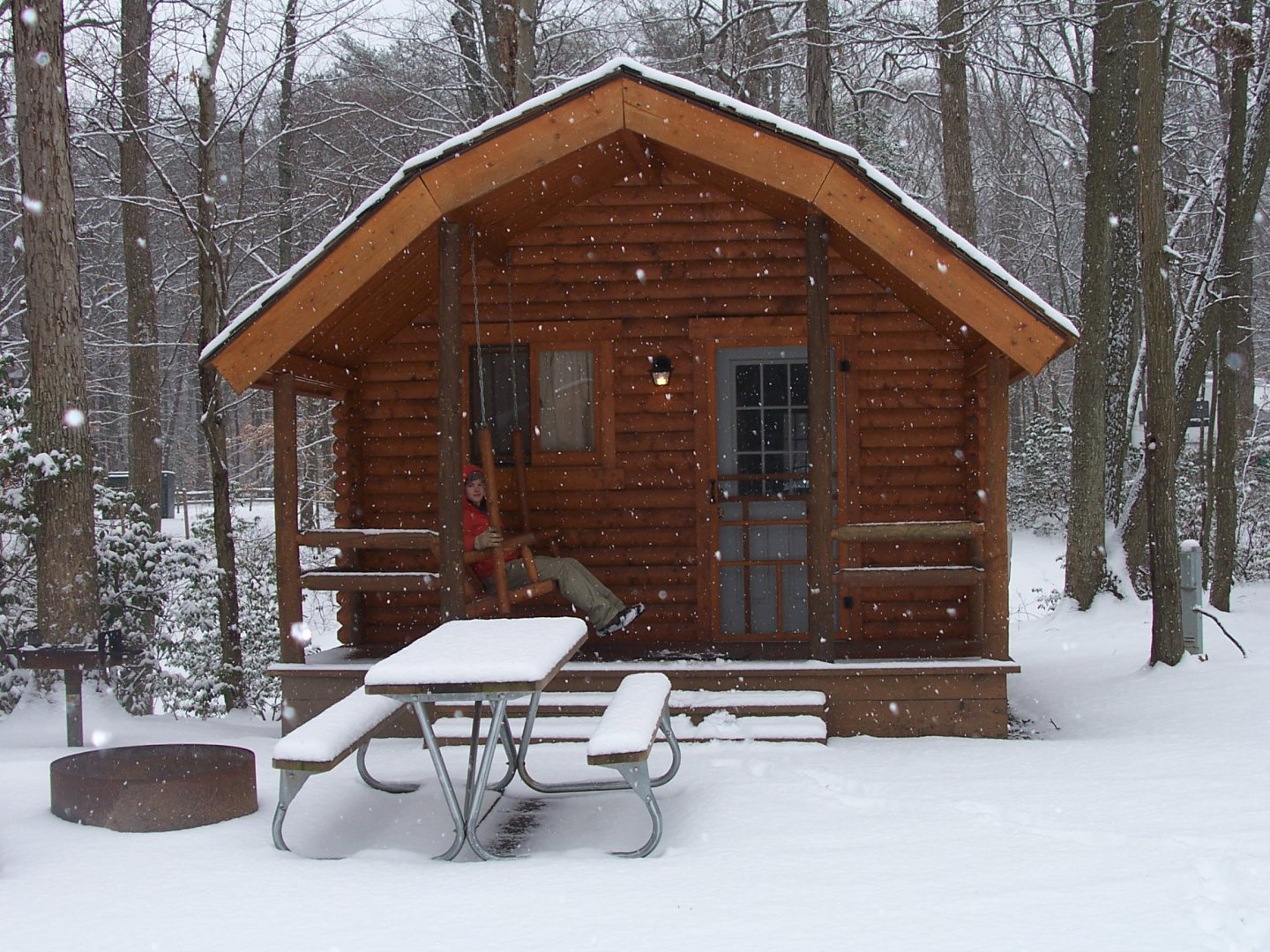Hemlock Overlook Regional Park
Environmental Interpretive Series: Forest Succession

Forest Succession
Forest Succession is a change in the landscape over time when there has been a disturbance in the vegetation and tree cover. This might be a natural event such as a fire, hurricane or insect damage but it can also be manmade after trees are harvested for lumber or when farmland is cleared then abandoned.
Progression of Growth
First, annual grasses and wildflowers will grow before giving way to shrubs and tree seedlings. At the intermediate stage, evergreens such as cedar and pine thrive while hardwood species start to take root. In the climax forest, hardwoods have taken over, shading out most other plants and trees while enriching the soil with decaying leaves.
Wildlife and Forest Phases
The types of wildlife living in the environment changes as succession progresses. Early stages of succession are more favorable to small, ground dwelling creatures such as rodents and the predators who hunt them. As larger plants and trees grow, larger species of mammals and different birds will find cover and nesting opportunities.
Deer will feed on the low plants in meadows during earlier stages but will find cover in forests. Native Americans burned areas to keep them in early stages of succession to attract deer and other large mammals.
By 1937, the area of Hemlock Overlook Regional Park was no longer being farmed and the forest was beginning to regrow. Grasses and shrubs were taking over the former fi elds with cedars, pines and hardwood trees soon to follow. Today the forest is a mix of beech, oak, maple and hickory trees.
One area of the park has a stand of trees with some that date back several hundred years. Along the banks of Bull Run near Popes Head Creek is group of Eastern Hemlocks, which is recognized by the Old-Growth Forest Network for its old-growth character. Hemlocks are the oldest living tree in the Eastern forests with some living nearly 1,000 years.


